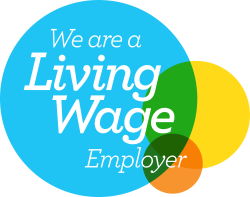
Full Fibre Internet : Everything you need to know
Everything is online these days, whether you’re filling in a form for the government, looking up a recipe or just chilling out with some popcorn-popping entertainment, chances are you’re doing it on fibre internet.
From dial-up to Full Fibre Internet
If you’re of a certain age, you may still occasionally look back to the early days of the internet and think about how far we’ve come. Once upon a time, getting online meant listening to a dial-up modem do its work (blocking the phone line in the process) and accessing text-based websites at a speed which would now be considered totally unacceptable for even mobile data in most places.
These days, not only do most homes in the UK have broadband, they typically have wireless, so you don’t even need to plug in before you play – or work.
The demand for data just keeps growing
Of course, with so many people doing so much online, there is a massive demand for data. According to figures from telecoms industry regulator Ofcom, during the year 2018, the average household used 240 gigabytes of data a month. This figure would have been literally impossible back in the days of dial-up modems, but was up only 26% from 2017.
Of course, that “only” is actually a hefty increase and there are all kinds of reasons why further hefty increases are highly likely, not all of them to do with entertainment (although both videos and games do require significant bandwidth). Children are now using computers as a matter of course and many videos are now for the purposes of learning rather than amusement. Adults are continuing their education online and also working online. Whole companies are basing their offerings around the assumption that people are not just going to have internet, but superfast broadband internet with, effectively, unlimited data.
From copper wire to fast fibre optic
In the early days, the internet was mostly delivered through copper wire. It was viewed as an extension of the telephone network and hence used the same. The arrival of fibre-optic cable was a big step forward, but not as big a step as it could have been. What fibre broadband means for a lot of domestic users is that there is fibre-optic cable to their nearest telephone-exchange cabinet, but that “last step” to the actual property is actually still the same old copper wire it has always been.
The government has now decided this has to change and has committed £5 billion to rolling out “fullfibre broadband” to the whole of the UK by 2025. That includes the hardest-to-reach 20% of the UK such as the Highlands of Scotland where, even now, the term “broadband” can be something of a joke.
From fibre Internet to full-fibre Internet
While the term “full-fibre broadband” may sound like a healthy breakfast cereal, what it actually means is that the old “last step” copper-wire connections will be replaced by fibre-optic cable to ensure that the full speed of fibre is applied end-to-end, along with its mammoth data capacity. This will be a huge improvement for the whole of the UK and could revolutionise life for businesses and individuals in rural areas.



